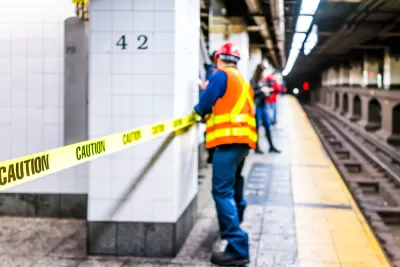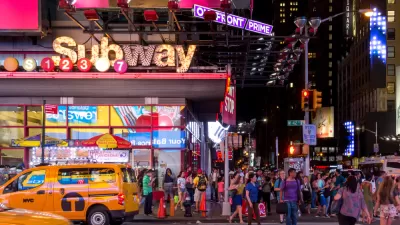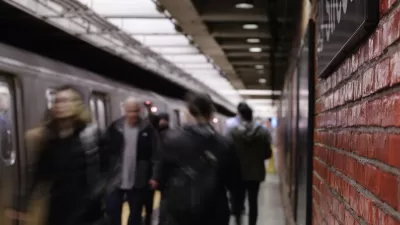It's been remarked upon before. Infrastructure in New York City is a cost nightmare compared to other global cities. Accountability is lacking, Josh Barro writes, but MTA also suffers from an "institutional lack of power."

Amid the nationwide debate over crumbling infrastructure, Josh Barro writes, "where New York stands out is the massive price tags associated with proposed and actual new projects, and the delays and limitations of vision they impose on new construction." While cities like London and Paris implement "transformative" transportation projects, NYC is paying inflated sums for the "mundane."
Barro goes through some of the many problems driving up costs. It's a lengthy paragraph. "When you're doing everything wrong, the best way to fix the problem isn't usually to go through the list of things you're doing wrong and fix them one by one. It's best to step back and ask why you're so bad at everything, whether a systemic problem is causing you to make so many separate mistakes."
Two root problems afflict MTA, Barro says. The first is a lack of accountability: it's unclear who's in charge, and no one is on hand to take blame. "Less discussed than the accountability problem is the MTA's institutional lack of power. When the MTA wants to build a big new shiny thing, it's at the mercy of a lot of people and entities it doesn't control."
Tackling the accountability problem will require fixing the power problem, Barro writes. The agency must have "the tools it needs to have even a chance at success, so somebody will be willing to be blamed if it fails." And beyond dealing with MTA's dysfunction, another question New York should be asking is, "At what point is the price too high for a project like this to be worth building?"
FULL STORY: Why New York Can’t Have Nice Things

Planetizen Federal Action Tracker
A weekly monitor of how Trump’s orders and actions are impacting planners and planning in America.

Congressman Proposes Bill to Rename DC Metro “Trump Train”
The Make Autorail Great Again Act would withhold federal funding to the system until the Washington Metropolitan Area Transit Authority (WMATA), rebrands as the Washington Metropolitan Authority for Greater Access (WMAGA).

The Simple Legislative Tool Transforming Vacant Downtowns
In California, Michigan and Georgia, an easy win is bringing dollars — and delight — back to city centers.

The States Losing Rural Delivery Rooms at an Alarming Pace
In some states, as few as 9% of rural hospitals still deliver babies. As a result, rising pre-term births, no adequate pre-term care and "harrowing" close calls are a growing reality.

The Small South Asian Republic Going all in on EVs
Thanks to one simple policy change less than five years ago, 65% of new cars in this Himalayan country are now electric.

DC Backpedals on Bike Lane Protection, Swaps Barriers for Paint
Citing aesthetic concerns, the city is removing the concrete barriers and flexposts that once separated Arizona Avenue cyclists from motor vehicles.
Urban Design for Planners 1: Software Tools
This six-course series explores essential urban design concepts using open source software and equips planners with the tools they need to participate fully in the urban design process.
Planning for Universal Design
Learn the tools for implementing Universal Design in planning regulations.
Smith Gee Studio
City of Charlotte
City of Camden Redevelopment Agency
City of Astoria
Transportation Research & Education Center (TREC) at Portland State University
US High Speed Rail Association
City of Camden Redevelopment Agency
Municipality of Princeton (NJ)





























